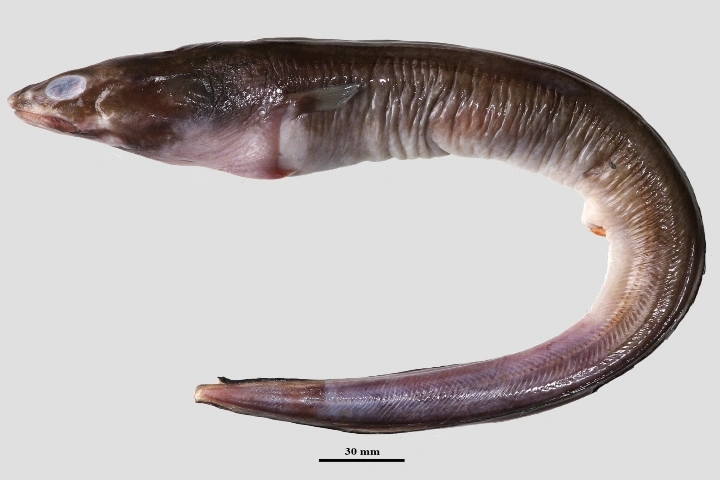The Indian Council of Agricultural Research’s National Bureau of Fish Genetic Resources has discovered two new marine fishes.
The first is an eel discovered when a specimen was collected at Colachel fish landing centre located in Kanyakumari, Tamil Nadu.
This eel hails from the congrid group of eels. It has been named Ariosoma albimaculata or White spotted stout conger. Albimaculata comes from two Latin words albus which is white and maculatus that means spotted, thus denoting the white spot present on the dorsal-fin origin. Details about this eel have appeared in Ichthyological Research, an international journal.
The eel is 240–487 mm long and its distinctive features are white spot on dorsal-fin origin; grey and shiny body colour with dark mark or spot on the postero-dorsal margin of the eyes. This description has been documented on the basis of 10 specimens collected by the fishermen who said that it was non-poisonous and that they caught it at a depth of 200 metres in the Arabian Sea. Their habitat is generally found in continental slope and underwater seamount crevices.
This eel species is most probably distributed along the south-west coast of India. It is the eighth species of congrid eels that have been documented from the Indian waters.

The second species is a sardine fish found in Chennai’s Pattinapakkam fish landing centre. The details about this fish were published in the international Journal, Fish Biology in December 2021. This new species of sardine has been christened as Dussumieria modakandai. The word modakandai is derived from two vernacular words in Tamil language. While moda means soft, kandai means soft fish.
The fish which is edible is eaten by the local people.
The NBFGR which works on genetic resources of fishes in India confirmed that the two species were new after conducting their taxonomic and molecular analysis.




















